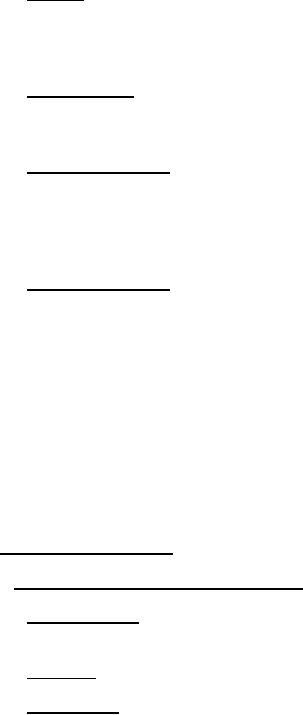 |
|||
|
|
|||
| ||||||||||
|
|  MIL-C-52437C
4.6.2.5 Fording. Tow the trailer chassis through creekbed water crossings not less than the
depth specified for not less than 2 minutes. Stop the trailer chassis in the water and turn off the
lights. Turn on the lights and continue towing for a total time of not less than 5 minutes. Park
the trailer chassis out of the water and inspect the trailer chassis.
4.6.2.6 Failure criteria. Inability of the trailer chassis to complete any of the tests specified
in 4.6.2.2 through 4.6.2.5, or nonconformance to any requirement specified herein, shall
constitute failure of that test.
4.6.2.7 Lifting and tiedown. With the trailer chassis anchored by means other than the
lifting or the tiedown attachment or locations being tested, apply the static loads specified in
MIL-STD-209 to each provision. Measure the dimensions of the attachments. Nonconformance
to 3.6.5.1 or 3.6.5.2, weld failure, permanent deformation of the trailer chassis or its tiedown
provisions, or nonconformance to MIL-STD-209 shall constitute failure of this test.
4.6.2.8 Railroad car impact. When specified (see 6.2), anchor the unpackaged trailer chassis
on a domestic service railway freight car (blocking is permitted). Hump the car, with the trailer
chassis tied down, at speeds of 4, 6, and 8 mph, (+5 0, percent mph) respectively, against
5 empty freight cars with their brakes set and draft gear extended. The trailer chassis shall face
in the direction of the 5 cars. Repeat the procedure at not less than 8 mph with the rear of the
trailer chassis in the direction of the 5 cars. The trailer chassis may be reversed by either
reversing the direction of the flatcar (preferred) or by reloading the trailer chassis in the proper
direction on the freight car. Once the test has begun, there shall be no readjustment of load nor
any reconditioning of the blocks, chocking material, or tiedowns except as necessary to reverse
the direction of the trailer chassis. After each impact, the trailer chassis shall be inspected. After
completion of the railroad impact test, an operational checkout of the trailer chassis shall be
conducted. Nonconformance to 3.6.2 shall constitute failure of this test.
4.7 Inspection of packaging.
4.7.1 Quality conformance inspection of pack.
4.7.1.1 Unit of product. For the purpose of inspection, a completely processed pack
prepared for shipment shall be considered a unit of product.
4.7.1.2 Sampling. Sampling for examination shall be in accordance with MIL-STD-105.
4.7.1.3 Examination. Samples selected in accordance with 4.7.1.2 shall be examined for the
following major defects. AQL shall be 2.5 percent defective.
125.
Trailer chassis not preserved as specified (see 5.1.1.1).
126.
Repair parts not preserved as specified (see 5.1.1.2).
127.
Maintenance tools not preserved as specified (see 5.1.1.3).
128.
Consolidation not as specified (see 5.1.1.4).
129.
Strapping not as specified for level A (see 5.1.1.4).
130.
Marking illegible, incomplete, or incorrect (see 5.3).
80
|
|
Privacy Statement - Press Release - Copyright Information. - Contact Us |